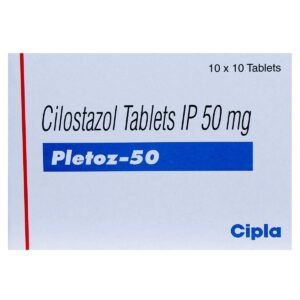CILASTAZOL
CILASTAZOL: Cilostazol is a medication primarily used to improve the symptoms of intermittent claudication, a condition characterized by pain, cramping, and weakness in the legs during physical activity. It is classified as a phosphodiesterase inhibitor.
Cilostazol works by inhibiting phosphodiesterase 3 (PDE3), an enzyme that breaks down cyclic adenosine monophosphate (cAMP) within smooth muscle cells. By inhibiting PDE3, cilostazol increases the levels of cAMP, leading to vasodilation (widening of blood vessels), decreased platelet aggregation (clumping), and reduced smooth muscle cell proliferation. These effects help improve blood flow and relieve the symptoms of intermittent claudication.
The usual recommended dose of cilostazol is 100 mg taken orally twice daily, administered at least 30 minutes before or 2 hours after breakfast and dinner. The medication should be taken consistently to achieve optimal results.
Common side effects of cilostazol may include headache, diarrhea, abnormal stools, and dizziness. Other less common side effects can include palpitations, increased heart rate, shortness of breath, nausea, rash, and muscle pain. It is important to note that cilostazol may also increase the risk of bleeding, so caution should be exercised in patients with bleeding disorders or those taking anticoagulant medications.
Cilostazol is contraindicated in certain individuals with heart failure, unstable angina, or recent myocardial infarction (heart attack). It should also be avoided in individuals with severe liver impairment or a history of bleeding disorders.
It is essential to consult a healthcare professional before starting cilostazol to determine if it is the appropriate treatment option and to discuss any potential drug interactions or contraindications.

